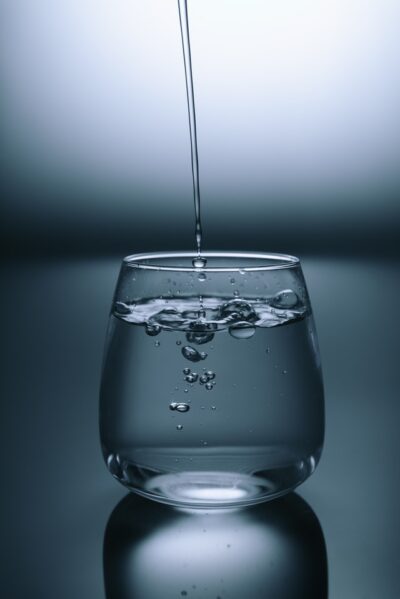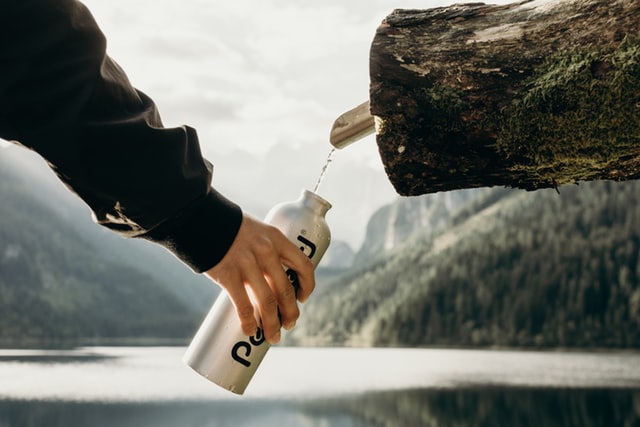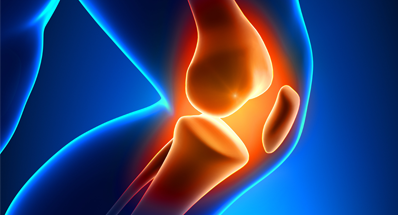Water.
That trusty, plain ol’ transparent liquid that sits beside our morning coffee with a frown on its face, demanding we get our daily quota.
For many, water is like that nagging old aunt telling us to stay home and get an early night rather than hit the dance floor and show off our fabulous dance moves!
We’ve all been told about the many health benefits of H2O and that we need to drink 8 glasses a day.
And the truth is, water really is your best friend when it comes to treating your arthritis symptoms.
Nutritionist Dr Sarah Brewer says keeping hydrated is a “golden rule” for arthritis. “[One of my] golden rules is to drink two to three litres of fluids per day, including water, soups, tea, juices. “[It] maintains good hydration and flow of nutrients to your joints.” [Source link 1]
Since water is so full of purifying qualities and so easily within reach, it should be at the top of your list.

Photo by KOBU Agency on Unsplash
HOW DOES WATER HELP?
Water has many benefits including keeping a healthy digestive system, prevention of kidney disease, controlling our blood pressure and maintaining healthy looking skin.
Not so well known is that water helps support joint pain relief.
Some forms of arthritis, such as osteoarthritis, are caused by a reduction in the cartilage tissue between our bones. Cartilage is a “firm but flexible connective tissue in your joints” [Source 2]. This articular cartilage functions as a low friction and wear resistant tissue and 60% of it is made from water. (Think of it like the silky smooth oil you put in your car to keep it running.)
When our bodies lack water, naturally the cartilage in our joints are not being supported to do their job.
According to an article by Dr. Fereydoon Batmangheldij M.D called “Your Body’s Many Cries for Water” [3] a dehydrated joint increases inflammation because it needs to “get some form of fluid circulation from the capsule of the joint, hence the swelling and tenderness in the joint capsule”. Since water is not freely available, the joint takes its lubrication from inside the joint itself, hence causing inflammation.
Inflammation in your joints leads to that nagging dull ache you feel in your bones.
Drinking water may not cure your joint pain, but you can support the cartilage surfaces of your bones by boosting your acqua intake.
NOT JUST ANY WATER
While tap water is deemed safe to drink by the World Health Organisation, and is certainly a cheap and accessible option, it is not necessarily the healthiest source for your hydration.
Why?
Many nutrionisits claim that the fluoride in water (Australia flouridates its tap water for dental health reasons) does not actually provide much benefit to our teeth and in fact could be linked to several adverse health outcomes. According to naturopath Tania Flack at 180nutrition.com.au, the fluoride that runs through our taps is not a naturally occuring calcium fluoride but is actually hydroflurosilicic acid. This is an unpurified substance that likely contains heavy metals which can have long term negative impacts on our health.
Unlike the water found in springs and mountain streams which is rich in naturally-occuring minerals, tap water is treated with a large number of chemicals to kill bacteria and not to mention the chlorine and other toxins it collects as it runs through the mains supply.
Water from the good ol squeaky tap in your kitchen also has a hardness to it which isn’t so friendly on your stomach.
Have I turned you off tap water enough now?
So what should I drink then??
FILTERED WATER
A cheap and efficient way to turn your tap water into a more consumption friendly liquid is to have a filter installed.
A filter takes out all the dirties and nasties you really don’t want to be digesting and gives you peace of mind while you sip your daily H2O quota.
If installing a filter seems like too much of a hassle, you can now buy a filter jug from companies like BRITA.
An added bonus is that water filters are known to “reduce the risk of gastrointestinal disease by more than 80 percent by removing cryptosporidium, e-coli and giardia from drinking water. [Source 4]
ALKALINE WATER
Alkaline water has soared in popularity in recent years. You’ve probably noticed the fancy slim looking alkaline water bottles lined up in the water section of your local supermarket.
But this isn’t just a fancy new sales gimmick, alkaline water has real benefits to your overall health.
The science behind this is that the water is engineered to have a higher pH level than tap or regular bottled water.
Why is a high pH level helpful?
A pH level is a measurement of how acidic or alkaline something is.
According to healthline.com, a pH value ranges from 0 – 14:
Acidic: 0.0 – 6.9
Neutral: 7.0
Alkaline (or basic): 7.1 – 14.0
There is a lot more to this, but in general when your body falls below neutral into an acidic state, it puts you at a greater risk of contracting disease or chronic illness, gaining weight, and experiencing pain and inflammation (joint pain and arthritis).
You can achieve a more alkaline state by eating more alkaline-forming foods such as fruits, vegetables, nuts and seeds and loads of greens! Likewise you can avoid an acidic state in your body by reducing foods such as grains, beans, meat and dairy products – and coffee (that’s a tough one I know).
Another way to do it is by drinking more alkaline water. This is particularly helpful if you are an athlete or like to do regular high energy cardio workouts such as sprinting. When you put your body under cardiorespiratory stress you build up lactic acid. A study has shown that drinking alkalized water may help reduce this lactic acid buildup and help with the fatigue caused by intense exercise. The mineral supplementation present in alkaline water can especially help with this if you have deficiencies such as a lack of magnesium. [Source 5]
DON’T JUST DRINK IT, SWIM IN IT

Photo by Efe Kurnaz on Unsplash
The wonders of water and how it can help your body extend beyond simply drinking it.
Exercising in water can be very effective in managing joint pain.
For many people with chronic arthritis, walking, running or regular workouts start to become just too painful and difficult. A far more effective way to keep your body moving and flexing those joints is to get in a pool, preferably a heated pool.
Known as hydrotherapy, water exercise is a soothing and gentle way for people with arthritis to build strength, relax sore muscles and relieve stiff joints. If you stand in chest deep water, your legs are given a break as the pressure is taken off a third of your body weight. If you have stiff and aching knees, back and hips, you will find it much more comfortable and easier to move in water than on land.
You don’t need to be a swimmer to gain the benefits of water exercise. There are all kinds of hydrotherapy style exercises you can do. Even simply walking through waist high water is a great way to move your joints easily and gain strength. Options range from private one-on-one sessions with a physiotherapist (if water exercise is new for you) to water aerobics classes in groups.
If you don’t already do it, find a pool you can slip into on a regular basis and let the healing powers of water soothe your joints and make you feel alive again!
So, there is a lot more to nature’s transparent liquid than we think.
Treat your joint pain holistically by embracing the powers of healthy, healing water.
Main Image by Aaron Burden on Unsplash
Other sources:
3. Special report: “Your Body’s Many Cries For Water” by Dr. Fereydoon Batmanghelidj, M.D.

Nick Dale
Nick is a lover of all things mentally and physically healthy, a personal development geek and trained yoga teacher. With a background as an ESL Teacher, Actor and Writer, communication in its many and varied forms is what keeps him sparked.






